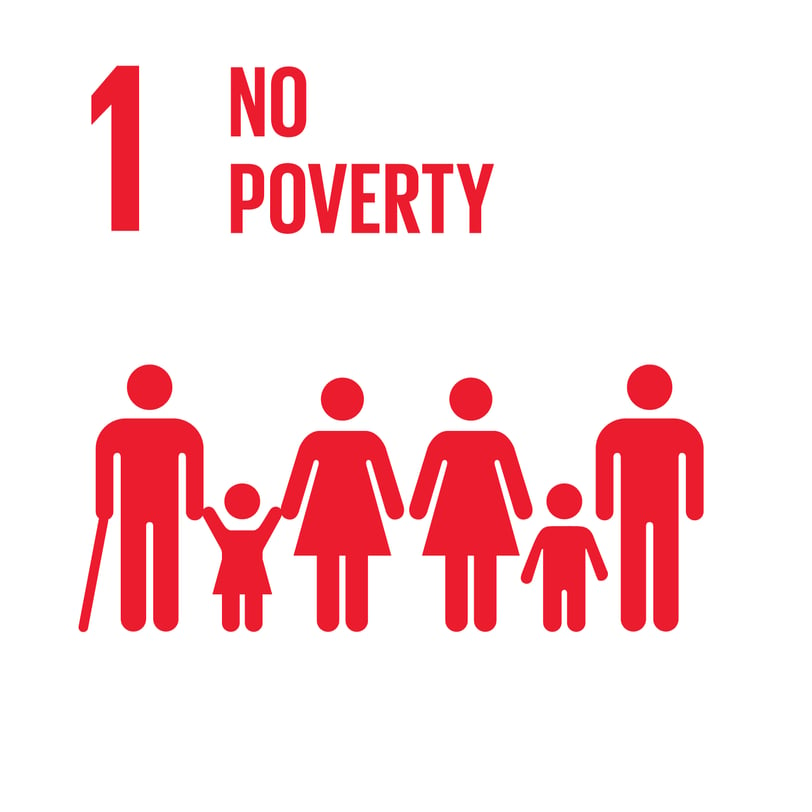Reducing social exclusion in accessing basic needs to improve the livelihoods for middle-class aspirants
The long-running pandemic has had the most significant impact on the poor in Bangladesh. Among them, the condition of the displaced people is deplorable. This article depicts multi-dimensional fluid theoretical policy guidelines that could accelerate the problem-eradication process.
COMMUNITYSUSTAINABLE LIVING
Muhammad Golam Sami
9/1/20223 min read


Image: SDG Agenda No., 1 ~ Poverty
The Agenda Synopsis: The long-running pandemic has had the most significant impact on the poor in Bangladesh. Among them, the condition of the displaced people is deplorable. The last shelter has been removed from their heads because of the number of people who have already become rootless due to various natural disasters (river erosion, droughts, cyclones) or due to transitional economic imbalances. Within the Dhaka City Corporation itself, this number is above 3.4 million. In contrast, over one lakh people live on the streets. However, due to the recent coronavirus, this population has not been able to meet their minimum basic needs. While the policy was talked about to ensure the livelihood of everyone, there was no one to talk to or see them. Due to the lack of specific theoretical frameworks, this large population has been excluded from the coronavirus outbreak, vaccination and susceptibility analysis. This has become one of the significant obstacles in Bangladesh's socio-economic and infrastructural development. A multi-dimensional fluid theoretical policy guideline could accelerate the problem eradication process.
In-depth Explanation: As a developing country, it is imperative to ensure the basic needs of all, such as accommodation, treatment, etc. Achieving middle-class aspirations is never possible, leaving this colossal population deprived of fundamental rights below poverty. So now we need the right policy for these deprived people and its implementation. At the same time, it is crucial to understand the condition below the iceberg through cross-analysis, policy triangulation, outcropping, and then we have to come out with a conclusion. We know the central, transformative promise of the 2030 Agenda for Sustainable Development and its Sustainable Development Goals (SDGs) is 'Leave no one Behind (LNOB).'
To establish equity and eradicate discrimination and rising inequalities, poverty, and exclusion, the LNOB has already has provided a guideline and framework. Their step-by-step approach recommended adapting and employing relevant tools, sequencing & prioritizing solutions, tracking and monitoring progress, and ensuring follow-up and review and integrating these systematic steps for the prior solution and policymaking. In the case of Bangladesh, I have thought of developing three types of shared policy frameworks to include the displaced and those living below the poverty line. First, formulate policies in a bottom-up approach towards a smooth economic transition and bring the floating and rootless population under the mainstream economy. Because the economic balance of a country plays a vital role in alleviating the poverty of that country. Secondly, formulating and implementing policies for sustainable rehabilitation are crucial, as the right to housing is a fundamental right. It acts as an indicator or policymaker on the quality of life of the people of a country. Therefore, it is urgent and vital to formulate policies to ensure housing for this vast population and increase sustainability and efficiency. Third, to take steps to ensure socio-cultural equity and to formulate optimum policies. Because if we think of a society or on a macro scale (country). The development of the socio-economic infrastructure of a nation depends on the cultural inclusion of all classes of that society. All peoples' mutual social cohesion and cooperation are sufficient to maintain the continuity of development and express ethnic solidarity.
Conclusion: To become a role model for developing countries and achieve sustainable goals, Bangladesh needs to consider the problems and deprivation of all classes, races, and cultures. As I have talked explicitly about the exclusion problem of rootless people of Bangladesh, To eradicate the exclusion and to create balance to mitigate the incompatibility of rootless and floating people, the policy recommendations are stated below:
1. The government can ensure a fair distribution of labor among the lower classes by eliminating corruption from the upper to the lower class, which causes economic instability.
2. Adding people to the new economic flow by conducting a proper survey of people displaced by natural disasters and analyzing their previous experience and financial contributions, easing the past's inconsistencies.
3. Identifying labor gaps targeting floating, rootless, and roofless people and balancing by creating bridges to create various small jobs.
4. The government, the Ministry of Housing, the Ministry of Finance, the Ministry of Planning, the Department of Architecture, and the Directorate of Urban Development can all develop an inclusive model housing project for the displaced. Sustainable and affordable housing can play a significant role in solving the problems caused by the enormous slums in the capital. In this case, as the socio-economic and livelihood indicators will improve, so will the environmental development.
5. Provide an effective direction through an inclusive education system, equal access to social institutions, and social stakeholder entity analysis to inculcate socio-cultural inclusion in all sections of society.




